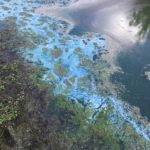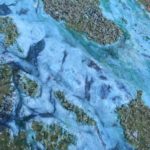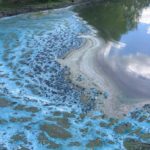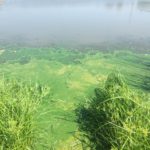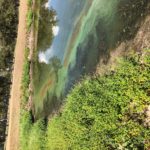Anabaena, Aphanizomenon, and Microcystis spp., etc.
What is Blue-green algae?
A group of photosynthetic bacteria
Physical characteristics
- can be unicellular, filamentous (thin and stringy or hair-like), or colonial
- buoyant and will form “scum” layer or floating mats on water surface
- can cause blue, green, brown, or reddish-purple coloration of water
Where does it grow?
Blue-green algae can grow in both marine and freshwater. Most of the harmful algae blooms (HABs) occur in freshwater. Blue-green algae can grow in lakes, ponds, reservoirs, and slow moving streams when environmental conditions are right, such as warm water, abundance of nutrients like phosphorus or nitrogen, and plenty of sunlight.
Cons of Blue-green algae
Blue-green algae produce cyanotoxins as well as taste-and-odor compounds that fowl the water they are found in. The cyanotoxins can pose a serious threat to not only fish but livestock, companion animals, and humans as well.
